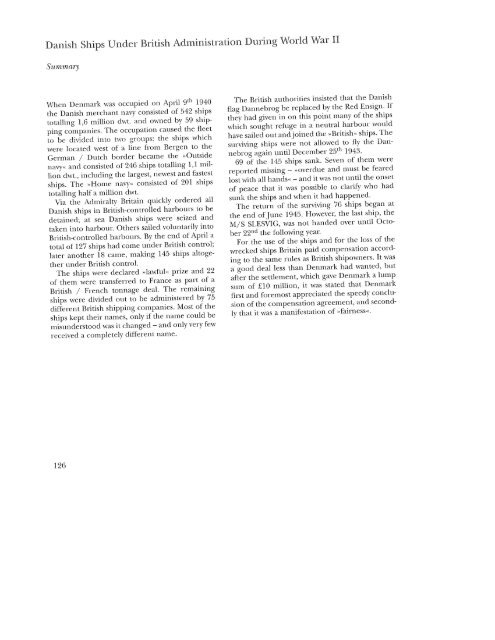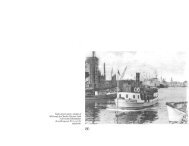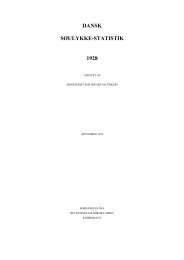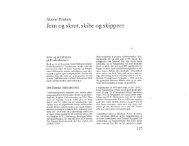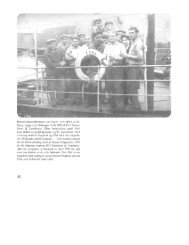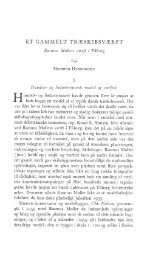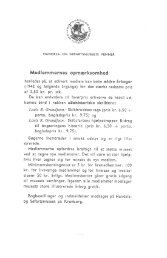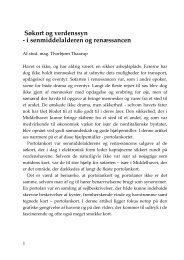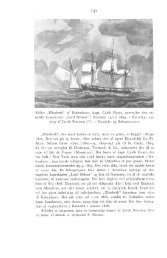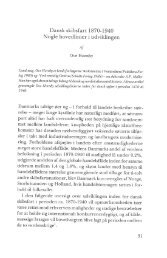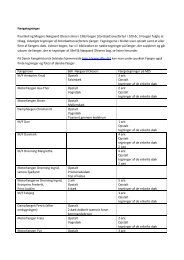Danske skibe under engelsk administration under 2. verdenskrig
Danske skibe under engelsk administration under 2. verdenskrig
Danske skibe under engelsk administration under 2. verdenskrig
You also want an ePaper? Increase the reach of your titles
YUMPU automatically turns print PDFs into web optimized ePapers that Google loves.
Danish Ships Under British Administration During World War II<br />
Summary<br />
When Denmark was occupied on April 9 th 1940<br />
the Danish merchant navy consisted of 542 ships<br />
totalling 1,6 million dwt. and owned by 59 shipping<br />
companies. The occupation caused the fleet<br />
to be divided into two oroups: the ships which<br />
were located west of a line from Bergen to the<br />
German / Dutch border became the »Outside<br />
navy« and consisted of 246 ships totalling 1,1 million<br />
dwt., including the largest, newest and fastest<br />
ships. The »Home navy« consisted of 201 ships<br />
totalling half a million dwt.<br />
Via the Admiralty Britain quickly ordered all<br />
Danish ships in British-controlled harbours to be<br />
detained; at sea Danish ships were seized and<br />
taken into harbour. Others sailed voluntarily into<br />
British-controlled harbours. By the end of April a<br />
total of 127 ships had come <strong>under</strong> British control;<br />
later another 18 came, making 145 ships altogether<br />
<strong>under</strong> British control.<br />
The ships were declared »lawful« prize and 22<br />
of them were transferred to France as part of a<br />
British / French tonnage deal. The remaining<br />
ships were divided out to be administered by 75<br />
different British shipping companies. Most of the<br />
ships kept their names, only if the name could be<br />
mis<strong>under</strong>stood was it changed - and only very few<br />
received a completely different name.<br />
126<br />
The British authorities insisted that the Danish<br />
flag Dannebrog be replaced by the Red Ensign. If<br />
they had given in on this point many of the ships<br />
which sought refuge in a neutral harbour would<br />
have sailed out andjoined the »British« ships.Jhe<br />
surviving ships were not allowed to fly the Dannebrog<br />
again until December 25 th 1943.<br />
69 of the 145 ships sank. Seven of them were<br />
reported missing - »overdue and must be feared<br />
lost with all hånds« - and it was not until the onset<br />
of peace that it was possible to clarify who had<br />
sunk the ships and when it had happened.<br />
The return of the surviving 76 ships began at<br />
the end of June 1945. However, the last ship, the<br />
M/S SLESVIG, was not handed over until October<br />
22 nd the following year.<br />
For the use of the ships and for the loss of the<br />
wrecked ships Britain paid compensation according<br />
to the same rules as British shipowners. It was<br />
a good deal less than Denmark had wanted, but<br />
after the settlement, which gave Denmark a lump<br />
sum of £10 million, it was stated that Denmark<br />
first and foremost appreciated the speedy conclusion<br />
of the compensation agreement, and secondly<br />
that it was a manifestation of »fairness«.


